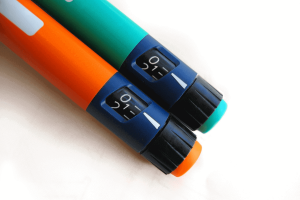Importance of Glucagon + New Changes to the Medication
What is glucagon?
Hypoglycemia–or extremely low blood sugar–is a condition that most commonly affects people with type 1 diabetes. If left untreated, hypoglycemia can turn serious or even fatal. Most of the time, low blood sugar can be treated with a small, sugar-rich snack or 15-20 grams of glucose tablets. But what happens when this treatment isn’t enough? That’s where glucagon comes into play.
When a person with diabetes experiences blood sugar levels that are too high, insulin is used to help lower the amount of glucose circulating through the body. Just like insulin, glucagon is also a hormone that is released by the pancreas. However, its job is to act as the opposite of insulin by raising the amount of glucose in a person’s blood. Even though glucagon is made naturally by the body, the hormone is also available as a medication for times when a person’s blood sugar levels drop to a dangerously low level. For people with type 1 diabetes, this medication is a must-have in every emergency kit, according to the American Diabetes Association.
How is glucagon given?
Glucagon kits are available through a prescription from your doctor. A glucagon kit usually includes a vial of powder (the medicine) along with a syringe filled with liquid to mix with the medicine. Giving a glucagon injection is a multi-step process that is often done by someone other than the patient. Here’s how it’s commonly done:
1. First, the person giving the injection must mix the glucagon powder with liquid. The finished mixture should look clear with a water-like consistency.
2. Next, the mixture should be returned to the syringe.
3. Finally, the injection site on the patient must be cleaned with alcohol before glucagon is given. Glucagon is usually injected into a fatty area, such as the patient’s arm, thigh, or buttock.
New Changes to Glucagon
In early 2014, the pharmaceutical company, Xeris, announced it was working on an improved way of administering glucagon. The G-Pen is an new, pen-shaped device that makes delivering glucagon faster and easier. Instead of forcing users to measure and mix ingredients in a syringe, the G-Pen comes fully loaded with medicine that’s ready to use. This is good news for individuals who are experiencing severe hypoglycemia and for the care providers who need to give a dose of glucagon as quickly as possible.
The G-Pen is still undergoing clinical trials, but Xeris says it hopes the product will be ready to hit the shelves by early 2015.




